Pre-Kindergarten - Intellectual
Designed to prepare children for Kindergarten, our pre-kindergarteners leave our program with a concrete foundation of rudimentary academic skills. Individual and small group activities allow teachers to ask questions and support children in formulating hypotheses, solving problems, and drawing conclusions.
Below are our pre-kindergarten goals for each of our content areas and some examples of our curriculum activities.
Natural Science:
Inquiry Skills
• Asks and seeks out answers to questions.
• Makes predictions about changes and gives a rationale for prediction.
• Describes why changes occur based on knowledge.
• Records observations through drawings and simple forms of representation.
• Identifies and uses simple tools to extend observations.
Living Things & Their Environment
• Uses senses to explore the environment and uses sensory vocabulary.
• Differentiates between living and nonliving things and will group both
living and nonliving things according to the characteristics that they share.
• Observes and describes plants, insects, and animals as they go through predictable life cycles.
• Recognizes changes in appearance that animals and plants go through as the seasons change.
• Observes and describes how natural habitats provide for the basic needs of plants and animals with respect to shelter, food,
water, air, and light.
• Observes and describes ways in which plants and animals resemble their parents in appearances.
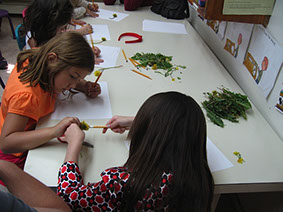
Language Arts:
Language
• Follows social rules when conversing and contributes knowledge to group
discussions.
• Identifies and classifies common words.
• Expresses spatial and temporal relationships.
• Describes objects and events in general language.
Reading
• Recites and dramatizes a variety of literature.
• Uses a broad vocabulary of sensory words.
• Recognizes and generates rhymes.
• Knows letter sounds and can begin sounding out words.
• Understands forms and functions of written English.
• Makes predictions using prior knowledge.
• Retells main events from a story and asks questions about important events
and characters.
Composition
• Is able to print all letters.
• Draws pictures and phonetically spells words to write a sentence.
• Dictates sentences for a story and collaborates to put the sentences in
chronological sequence.
• Generates questions and gathers information to answer questions in various ways.
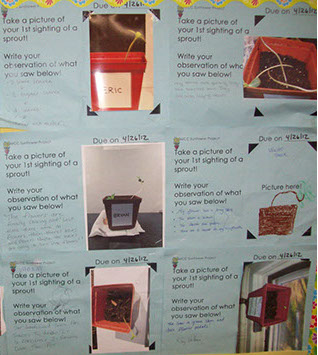
Mathematics:
Number Sense & Operation
• Counts by ones to at least 50 and by tens to at least 100.
• Matches quantities up to at least 10 with numerals and spoken word.
• Uses positional language and ordinal numbers.
• Understands concepts of whole and half.
• Uses objects to solve addition problems to ten.
• Identifies familiar U.S. coins.
Patterns
• Recognizes, describes, reproduces, extends, and creates repeating (ABCABC)
patterns of concrete materials, color, and shape.
• Identifies the attributes of objects for sorting and classifying.
• Sorts and classifies objects by color, shape, size number, and other properties.
Spatial Sense & Geometry
• Identifies space, direction, movement, relative position, and size using body
movement and concrete objects.
• Names, describes, sorts, and draws simple two-dimensional shapes.
Measurement
• Recognizes and compares attributes of length, weight, and time.
• Makes estimations and uses standard and nonstandard units of measurement
with support from teacher.
Data & Analysis
• Collects data and draws conclusions about data with support from teacher.
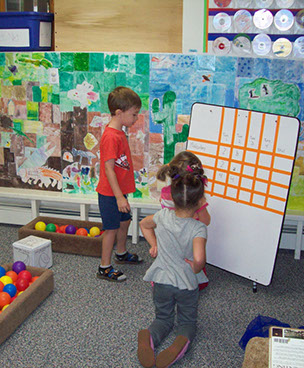
History and Social Science:
• Discusses and uses vocabulary related to chronology and time and puts their own
family events in temporal order.
• Identifies and describes cause and effect related to personal experience and stories.
• Discusses examples of personal responsibility, fairness, rules, and the qualities valued in
a person’s character.
• Discusses classroom and family roles and responsibilities.
• Discusses and dramatizes various occupations and basic economic concepts.
• Constructs and describes simple maps.
• Discusses and observes national holidays and important American symbols.
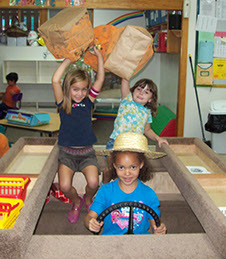
Engineering and Physical Science:
• Sorts objects by observable properties such as size, shape, color, weight, and
texture.
• Learns safety procedures when using tools and equipment.
• Explores and identifies simple machines such as ramps, gears, wheels, pulleys,
and levers.
• Describes the various ways objects can move, such as in a straight line, zig-
zag, back-and-forth, round-and-round, fast and slow.
• Explores, describes, and compares the properties of liquids and solids found in
the daily environment.
• Observes, describes, and compares ways humans, animals, birds, and insects
use various parts of their bodies to accomplish certain tasks.
• Experiments with a variety of objects to determine how they stand and
balance and whether they sink or float.
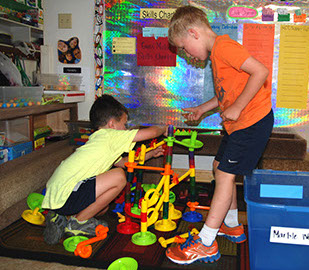
508-339-4111
1100 School St.
Mansfield, MA 02048
